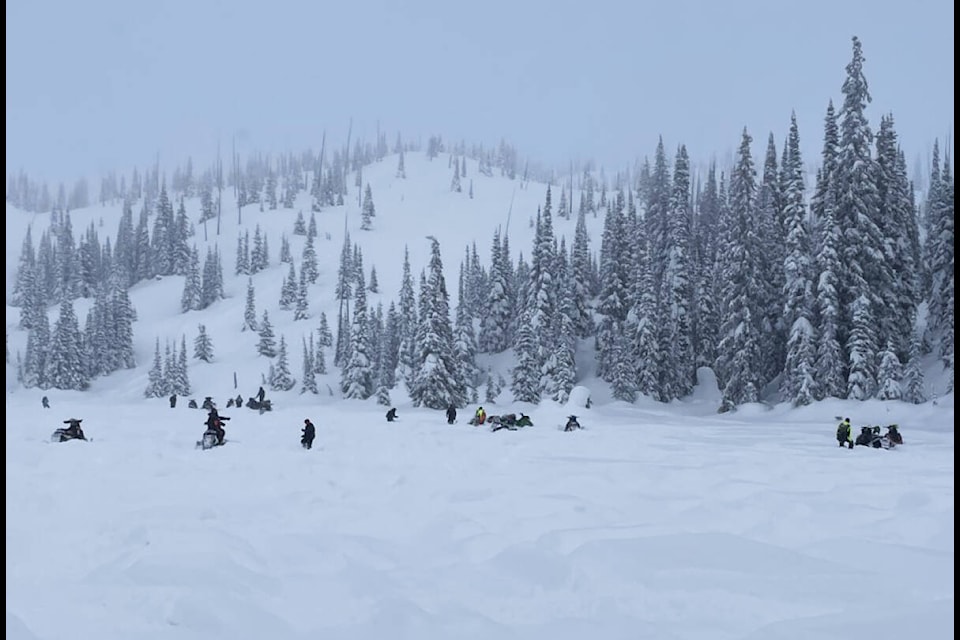Time is of the essence in an avalanche rescue: those buried in the snow have just 10 minutes to get out.
That was the main point by Dave Merritt, of Prince George Search and Rescue, during an avalanche safety course last week hosted by South Cariboo Search and Rescue.
“The biggest thing I teach is to trust your instincts and to get the training, get the equipment and practice using it,” Merritt said. “Everyone has to have a transceiver, probe and shovel. If you don’t have those you shouldn’t even be playing in the mountains.”
After a day of theory, Merritt took his students out to Mica Mountain for a practical test. Each student was tasked with locating a rug - which included a transceiver - buried under the snow and excavating it.
Horse Lake esthetician Trista Mayes was eager to learn some tips. She and her husband Justin started snowmobiling two seasons ago.
“When we’re out there anything could happen so I would rather be as prepared as I can and know how to rescue somebody if that situation were to arise,” Mayes said. “We ride with quite a big group when we go out and I want to make sure I’m able to help search for somebody.”
READ MORE: SAR crew dedicated to the cause
SCSAR manager Christie Falk took the training as a refresher. She said Merritt provides a comprehensive introduction to avalanche rescue and its risks.
“It touches on snow and how through the winter it changes with the weather. You might get snow, then freezing rain and that builds different levels in the snow,” Falk said. “Some of those levels become a weak point, like say if you have an icy layer in the middle that’s more likely to slide from that layer up.”
Merritt said one of the first things any rider should do is check the Avalanche Canada bulletin online. Letting someone know your route and planned return time is also key.
In addition to the transceiver, probe and shovel Merritt said an avalanche airbag is a good piece of equipment to have, along with a medical kit and satellite phone. If everyone in a group is organized and works together, Merritt said they should be able to save someone before their air runs out.
“If you haven’t practiced doing it you’re probably not going to be as fast and efficient. You have a 10-minute window from the time a person is buried to get them out. You got to be proficient and efficient using your equipment. I challenge everybody to practice it multiple times during the winter.”
While the gear can be expensive, Mayes said when your life is on the line, money shouldn’t be an issue.
“I think you just need to make sure you have some sort of safety knowledge for whatever sport you’re doing and have the tools. I pack stuff so that if we do get stuck on the mountain we can make it overnight,” Mayes said. “It’s not that you’ll be rescued in a couple of hours, you’ll probably be rescued in 15 hours. It takes time.”
Paying attention to snowfall or drastic changes in temperature is also important, Merritt said. Riders should rely on their instincts as much as the forecast, especially when out in the wild.
Falk said the training taught her respect for the backcountry and how to assess risks differently.
“I think it’s so important as SCSAR member because we go out into the backcountry we’re going into potentially bad terrain to rescue people,” Falk said. “We have such a big sledding community up here so I think bringing this training in for regular people to take is so important.”
patrick.davies@100milefreepress.net
Like us on Facebook and follow us on Twitter/p>
